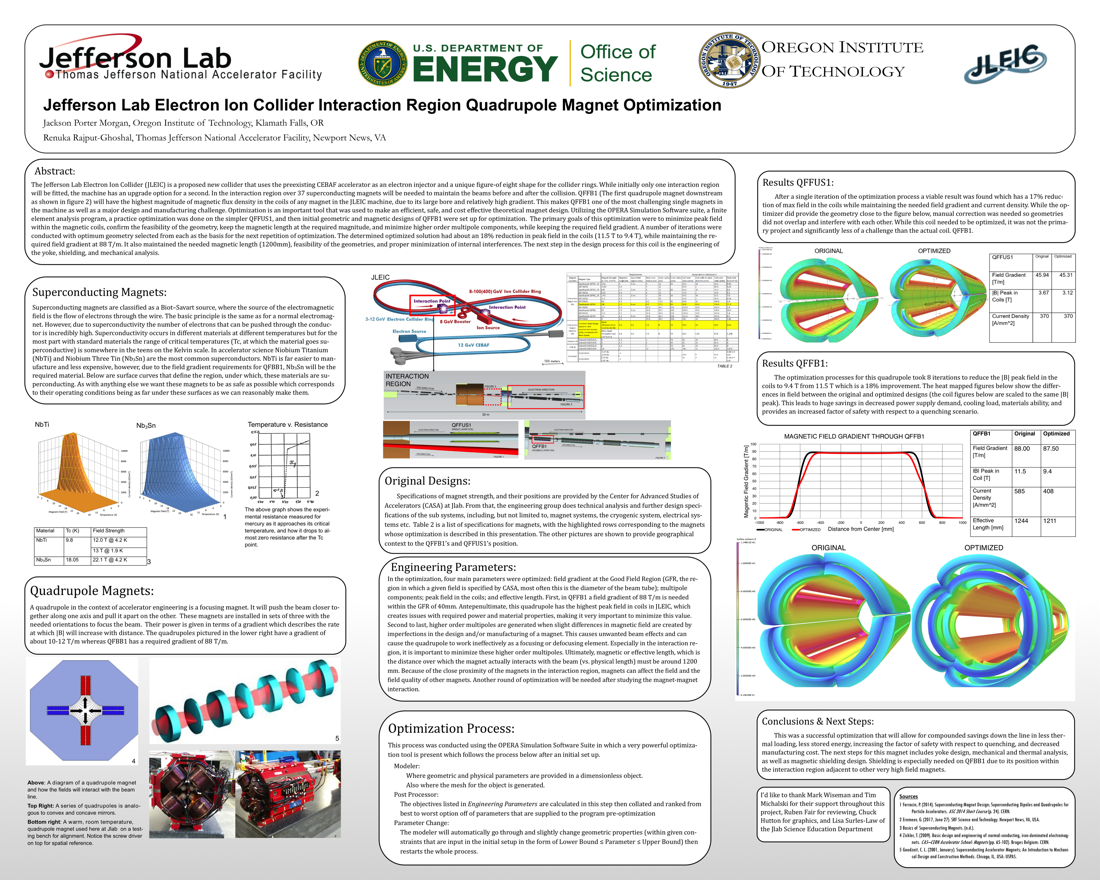Undergraduate Research at Jefferson Lab
Jefferson Lab Electron Ion Collider Interaction Region Quadrupole Magnet Optimization
Student: Jackson Morgan
School: Oregon Institute of Technology
Mentored By: Renuka Rajput-Ghoshal
The Jefferson Lab Electron Ion Collider (JLEIC) is a proposed new collider that uses the preexisting CEBAF accelerator as an electron injector and a unique figure-of eight shape for the collider rings. While initially only one interaction region will be fitted, the machine has an upgrade option for a second. In the interaction region over 37 superconducting magnets will be needed to maintain the beams before and after the collision. QFFB1 (The first quadrupole magnet downstream of the interaction point) will have the highest magnitude of magnetic flux density in the coils of any magnet in the JLEIC machine, due to its large bore and relatively high gradient. This makes QFFB1 one of the most challenging single magnets in the machine as well as a major design and manufacturing challenge. Optimization is an important tool that was used to make an efficient, safe, and cost effective theoretical magnet design. Utilizing the OPERA Simulation Software suite, a finite element analysis program, a practice optimization was done on the simpler QFFUS1, and then initial geometric and magnetic designs of QFFB1 were set up for optimization. The primary goals of this optimization were to minimize peak field within the magnetic coils, confirm the feasibility of the geometry, keep the magnetic length at the required magnitude, and minimize higher order multipole components, while keeping the required field gradient. A number of iterations were conducted with optimum geometry selected from each as the basis for the next repetition of optimization. The determined optimized solution had about an 18% reduction in peak field in the coils (11.5 T to 9.4 T), while maintaining the required field gradient at 88 T/m. It also maintained the needed magnetic length (1200 mm), feasibility of the geometries, and proper minimization of internal interferences. The next step in the design process for this coil is the engineering of the yoke, shielding, and mechanical analysis.

Citation and linking information
For questions about this page, please contact Education Web Administrator.
